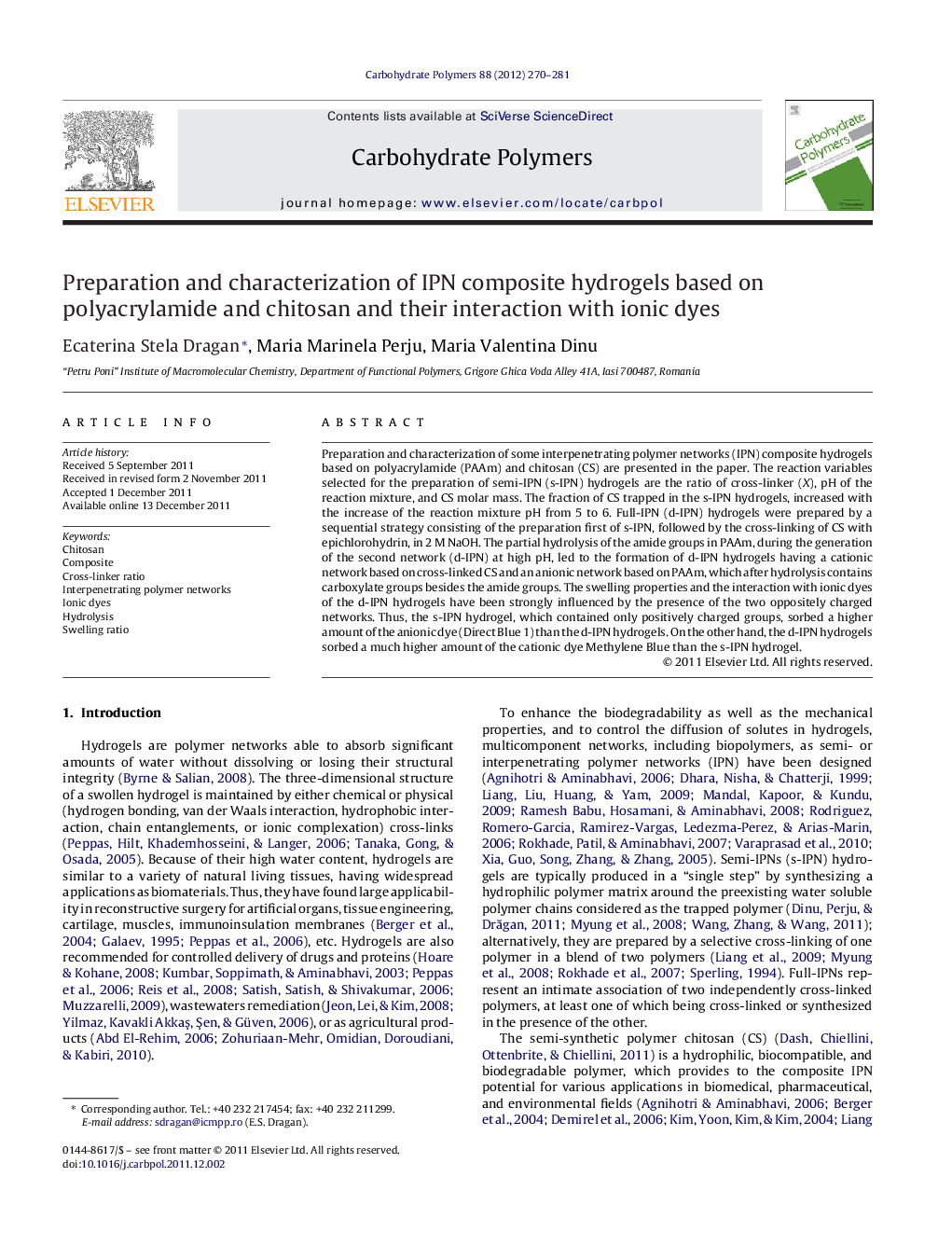| Article ID | Journal | Published Year | Pages | File Type |
|---|---|---|---|---|
| 1384962 | Carbohydrate Polymers | 2012 | 12 Pages |
Preparation and characterization of some interpenetrating polymer networks (IPN) composite hydrogels based on polyacrylamide (PAAm) and chitosan (CS) are presented in the paper. The reaction variables selected for the preparation of semi-IPN (s-IPN) hydrogels are the ratio of cross-linker (X), pH of the reaction mixture, and CS molar mass. The fraction of CS trapped in the s-IPN hydrogels, increased with the increase of the reaction mixture pH from 5 to 6. Full-IPN (d-IPN) hydrogels were prepared by a sequential strategy consisting of the preparation first of s-IPN, followed by the cross-linking of CS with epichlorohydrin, in 2 M NaOH. The partial hydrolysis of the amide groups in PAAm, during the generation of the second network (d-IPN) at high pH, led to the formation of d-IPN hydrogels having a cationic network based on cross-linked CS and an anionic network based on PAAm, which after hydrolysis contains carboxylate groups besides the amide groups. The swelling properties and the interaction with ionic dyes of the d-IPN hydrogels have been strongly influenced by the presence of the two oppositely charged networks. Thus, the s-IPN hydrogel, which contained only positively charged groups, sorbed a higher amount of the anionic dye (Direct Blue 1) than the d-IPN hydrogels. On the other hand, the d-IPN hydrogels sorbed a much higher amount of the cationic dye Methylene Blue than the s-IPN hydrogel.
► Fraction of trapped CS increased with reaction mixture pH and cross-linker ratio. ► Anionic/cationic full-IPN hydrogels by selective cross-linking of CS at high pH. ► Preferential sorption of anionic dyes on single-IPN hydrogels. ► Preferential sorption of cationic dyes on full-IPN hydrogels.
